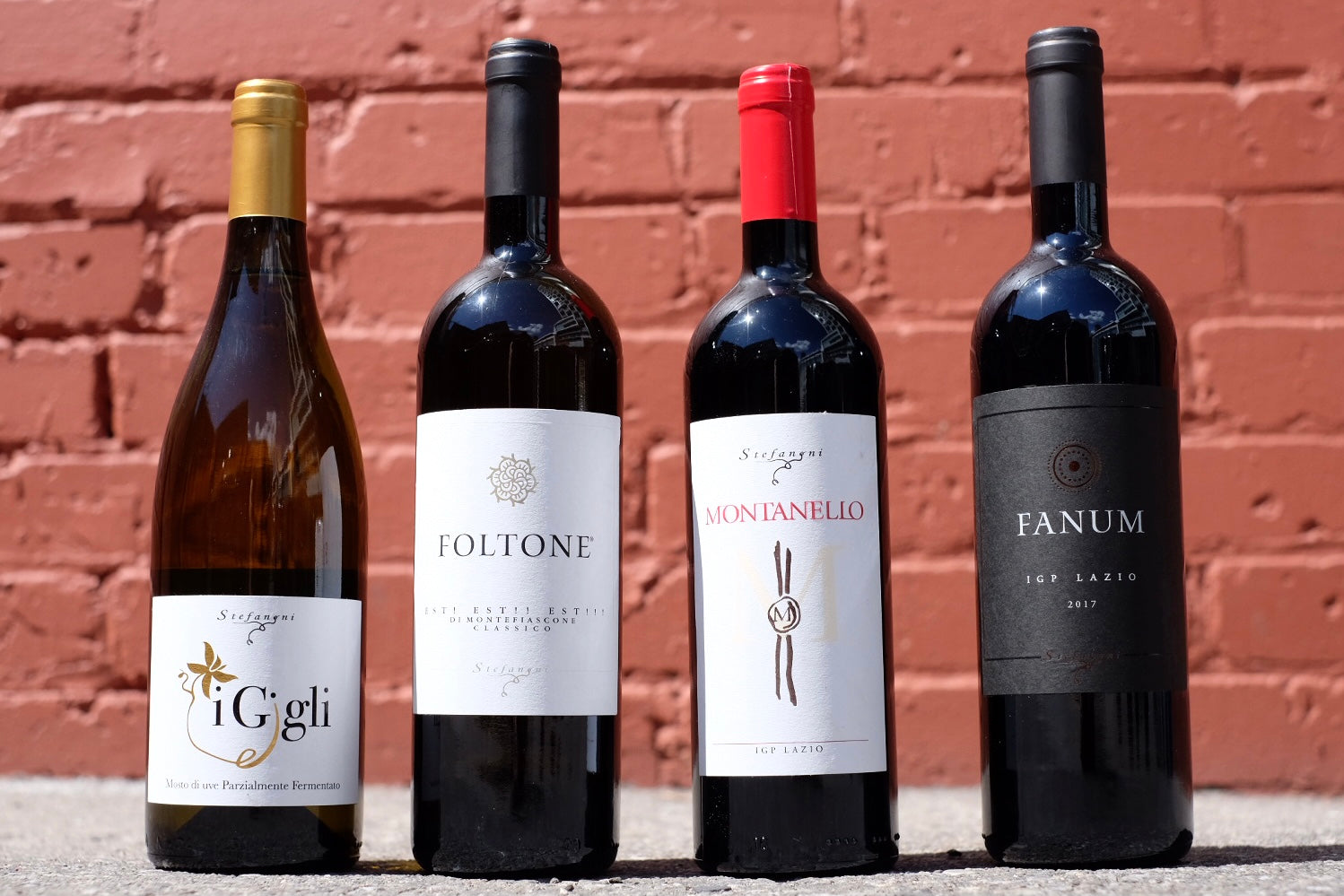Est! Est!! Est!!! It's the best! best!! best!!!
The whimsically-named Est! Est!! Est!!! di Montefiascone DOC sits in the northwestern part of Lazio, near the region’s border with Umbria in central Italy. Legend states that a bishop travelling to Rome would send a scout a day ahead of him to find the inns boasting the best wines and mark them with the word Est, meaning “it is” in Latin. In Montefiascone, the wine was apparently so good that the scout marked “Est! Est!! Est!!!” above the local inn’s door, and the wine was thereafter dubbed as such.
Despite the historic fame of the Lazio region it is not known for famous wines. This doesn’t mean that there are not amazing wines to be found in the region. They are just harder to find in the North American Market, as most of these quality wines are consumed within Lazio and the closest city to the DOC of Est! Est! Est!, Rome.
One of these wineries producing quality wine within Est! Est!! Est!!! is Stefano Stefanoni. Since 1950, Cantina Stefanoni has been passed from father to son, with each generation making improvements in viticulture and vinification. Stefanoni’s wines are grown and made as naturally as possible, by hand, with minimal intervention.
The Stefanoni family works in partnership with the University of Perugia to better understand their local form of Trebbiano, called Roscetto, a strain of Trebbiano Giallo. Although grown in pockets all over Italy, the local-to-Montefiascone clone Roscetto shows special properties that set it apart. Roscetto accounts for the better part of their ‘Cru’ Foltone, thought by many to be the very finest example of Est! Est!! Est!!! In addition, they have helped resuscitate the red grape Violone, a local strain of Montepulciano that has some complex characteristics that are particular to the area.
| Est! Est!! Est!!! di Montefiascone “Foltone” - $24.30 |
The ‘Cru’ of the estate, “Foltone” by Stefano Stefanoni is arguably the finest example of Est! Est!! Est!!! In English, Foltone means ‘thicket’, and is named for the thickets of brambles that adorn the property. The assemblage of grapes is 50% Roscetto, 30% Trebbiano Giallo, and 20% Malvasia. Roscetto is the specific-to-Montefiascone clone of Trebbiano Giallo that has its own special properties. Foltone is medium-bodied, with persistent notes of salty mineral, yellow plum, blanched almond, and a touch of white flowers. |
| Moscato “I Gigli” - $22.78 |
“I Gigli” means ‘the lilies’ and the wine smells like them, too. 100% Yellow Muscat, this beautiful wine is gently bubbly and gently sweet, reminiscent of Moscato d’Asti (except a touch drier). I Gigli is perfect for sipping as an aperitif or with a light dessert like sorbet or fresh summer fruit. While the world isn't as enamored by sweet wines as it once was, there is something satisfying and distinctly summery about this inherently fresh style. It has intensely aromatic notes of rosewater, lychee, nectarine, and green grapes. The wine is soft, frothy, and delicious, with zesty acidity to balance the slight sweetness. |
| Rosso di Lazio “Montanello” - $23.92 |
Montanello is Stefano Stefanoni’s traditional Lazio red wine, made up of 50% Sangiovese, 40% Violone, and 10% Ciliegiolo. In some years, a few percent of Merlot will sneak into the blend. Sangiovese is well-known, but the other two grapes in the blend require some explanation. Violone is, like Roscetto, a specific-to-the-area clone of another well-known grape variety, this time the famous Montepulciano of Abruzzo fame. Violone gives a generous, purple-tasting, soft wine, and in this particular blend does a good job counterbalancing the acidity of the Sangiovese. Ciliegiolo, on the other hand, offers a structured, tannic, muscular note to the Montanello. One of the parents of Sangiovese, Ciliegiolo has a rustic cherry and powdered stone quality. Montanello is a generous, fruity, supple red wine that represents very good value. |
| Rosso di Lazio “Fanum” - $38.42 |
Fanum represents a divergence in tradition from the Stefanoni estate, being the only wine they produce from non-indigenous varietals. The blend consists of 40% Cabernet Sauvignon, 40% Syrah, and 20% Merlot. What is most interesting about Fanum given the non-indigenous grape assemblage is that it is a beautiful example of high-altitude wine grown in volcanic soil. There is a salty, gritty power to all of the Stefanoni wines to varying degrees, but it seems to show best in Fanum, manifesting itself in the form of suave, fine tannins, and a piercing creosote character on the nose and palate. This is a wine that can be cellared for several years, but is highly drinkable now. |
| You can find these wines at both of our location or shop for them online here.
|


